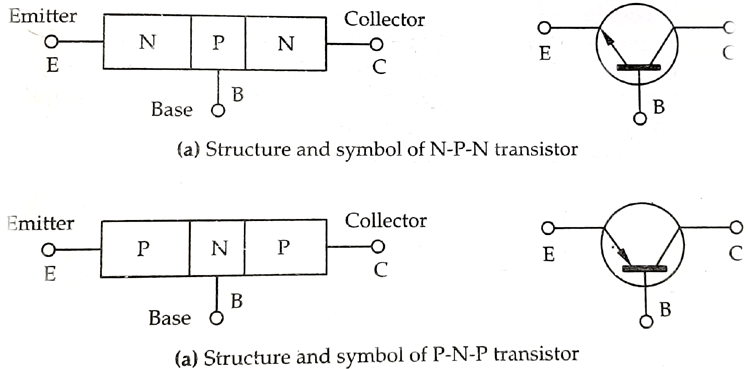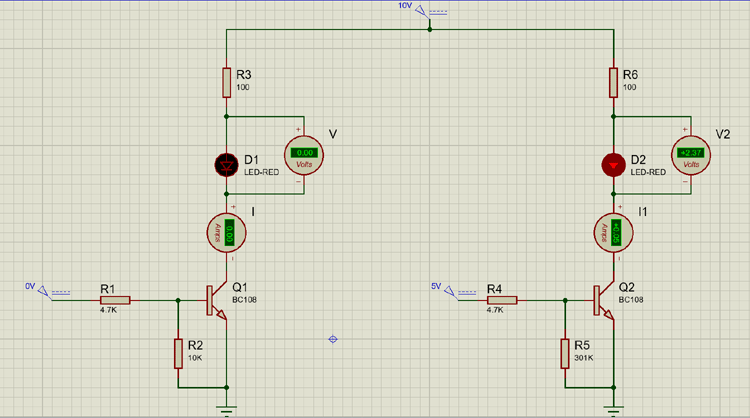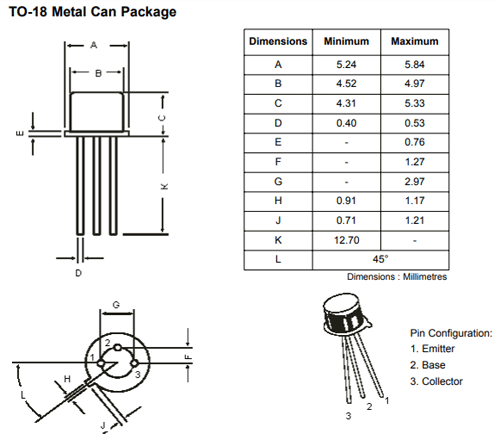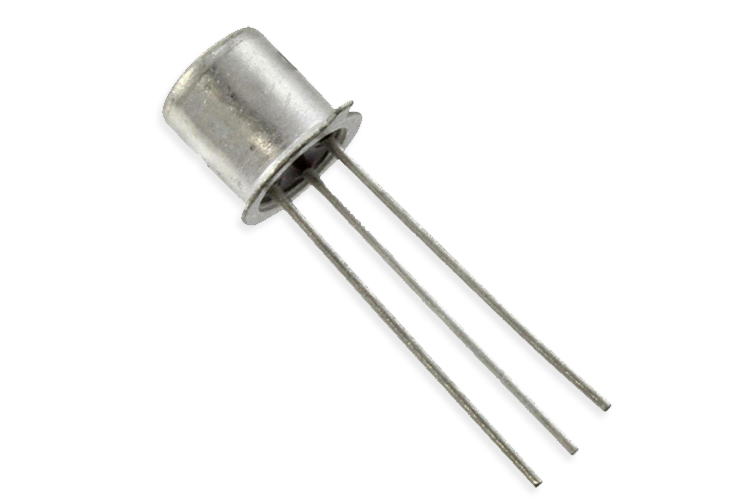BC108 NPN Metal Can Transistor
BC108 is a generic semiconductor device that can be used to amplify or switch signals or power. The BC108 is an NPN Transistor, hence we need to provide a small amount of positive voltage to the base of the transistor and then only the required amount of current flows through the base of the transistor. To use this transistor as an amplifier, you need to get the gain value from the datasheet of the device. The gain value can differ depending upon the manufacturer, so it's highly recommended to check out the datasheet of the specific device before you do the calculation. The maximum collector current of this transistor is rated at 200mA with a maximum emitter-base voltage of 5V. This transistor has a collector-emitter voltage of 30V and a collector base voltage of 5V. This transistor can operate with 150*C.
When this transistor is in biased condition, then it can allow a maximum current of 200mA across CE(Collector Emitter) Junction, this state of the transistor is called the saturation state and driving a load that consumes more current than 200mA may damage the device in this condition. As you already may know, a transistor is a current controlled device so when the base current is removed, the transistor becomes fully off, in this stage the transistor is working in its Cut-off Region and the Base Emitter voltage could be around 660mV.
BC108 Pinout Configuration
|
Pin Number |
Pin Name |
Description |
|
1 |
Emitter |
Electrons emitted from the emitter into the first PN junction |
|
2 |
Base |
Controls the biasing of the transistor |
|
3 |
Collector |
Electrons Emitted from Emitter Collected by the Collector |
Basic Overview and Features
- Bi-Polar NPN Transistor
- DC Current Gain (hFE) is 900 maximum
- Continuous Collector current (IC) is 200mA
- Emitter Base Voltage (VBE) is 5V
- Base Current(IB) is 10mA maximum
- Available in TO-18 Metal Can Package
- Maximum Collector-Base Voltage |Vcb|: 30 V’
- Collector Dissipation: 0.3 W
- Transition Frequency:150 MHz
- Operating Junction Temperature Max (Tj): 175 °C
- Noise Figure – 2 dB
- Operating and Storage Junction Temperature Range -65 to +175 °C
- Collector Capacitance 5pF
Note: Complete technical information can be found in the BC108 Datasheet, linked at the bottom of this page.
BC108 Equivalent Transistors
BC547, BC548, BC549, 2n3904, BC107, 2N2222, 2N3053, 2N2907, BC177B
Basic Working of a Transistor
The BC108 Transistor is a general-purpose N-P-N transistor, A junction transistor is simply a sandwiched construction between two layers of N-type material or P-type material. Depending upon the construction, transistors are divided into two categories - NPN transistor and PNP transistor as shown below.

In an NPN transistor, electrons work as the primary charge carriers and are emitted from the emitter of the transistor to the PN junction. When a positive voltage is applied to the base, holes are created to the base, so they start migrating to the emitter junction, this process thins out the depletion region from the PN junction and more and more electrons start flowing and are collected by the collector.
How to use BC108 Transistor in a Circuit
Unlike MOSFETs, transistors are current controlled devices, means they can be turned on or off by supplying required base current (for BC180 transistor it is 2mA). BC550 is an NPN transistor that means it will be left open when no current is applied to its base, but when we apply a base voltage the transistor will turn on. The simulated circuit below shows how this transistor behaves, when a base current is applied and when no current is provided to the base.

When we turn on the transistor by supplying a required current to the base of the transistor, it will remain on, unless the voltage at the base of the transistor reaches zero. The base of the transistor cannot be left floating otherwise there could be false triggering to the transistor which may lead to issues in the circuit. To resolve this issue, we need to add pulldown resistors, for example in the above case, a 10K resistor is used to pull down the base of the transistor.
Applications
BC108 Transistor is a very versatile device, its high frequency range and large bandwidth makes it suitable for many different applications.
- LED dimmers or flashers
- Switching Applications
- Preamplifier for Power Amplifier
- High frequency switching
- Modulator and Demodulator for RF frequency
2D Model and Dimensions
If you are designing a PCB or Perf board with this component, then the following picture from the Datasheet will be useful to know its package type and dimensions.












